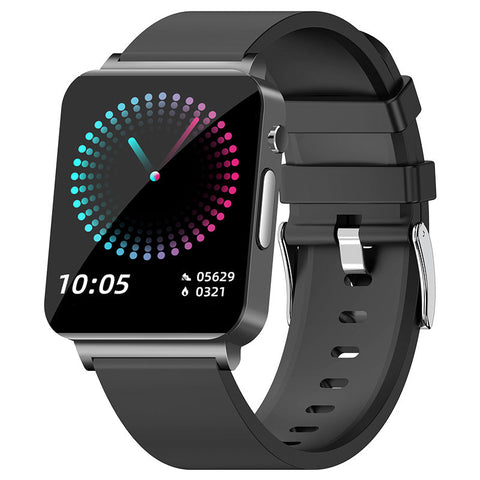Essential Tips for Safely Storing Perishable Foods at Home
Storing perishable foods safely is crucial for maintaining both the quality and safety of your meals. Improper storage can lead to food spoilage, foodborne illnesses, and wasted groceries. By following these easy and helpful tips, you can ensure that your perishable foods remain fresh and safe to eat.
1. Understanding Perishable Foods
Perishable foods are those that spoil quickly if not stored properly. This category includes fresh fruits and vegetables, dairy products, meat, poultry, seafood, and certain cooked foods. The high moisture content in these items creates an ideal environment for bacteria and mold to grow, which is why they require specific storage conditions.

2. The Importance of Temperature Control
Temperature is the most critical factor in preventing the growth of harmful bacteria. The "danger zone" for perishable foods is between 40°F (4°C) and 140°F (60°C). Bacteria can multiply rapidly within this range, leading to foodborne illnesses. To avoid this, always keep your refrigerator at or below 40°F (4°C) and your freezer at 0°F (-18°C) or lower.
Refrigerator Tips:
- Use a Thermometer: Place a thermometer in your refrigerator to monitor the temperature. This ensures that your fridge stays below 40°F (4°C).
- Avoid Overloading: Overcrowding your refrigerator can obstruct air circulation, leading to uneven cooling. Leave space between items to allow for proper air flow.
- Place Foods Correctly: Store raw meat, poultry, and seafood on the bottom shelf to prevent their juices from dripping onto other foods. Keep dairy products in the coldest part of the fridge, usually the back, and store fruits and vegetables in designated crisper drawers.
Freezer Tips:
- Label and Date: Clearly label and date all items before freezing. This helps you keep track of how long they’ve been stored and ensures you use older items first.
- Use Proper Containers: Use airtight containers or heavy-duty freezer bags to prevent freezer burn, which can degrade the texture and flavor of your food.
- Freeze in Portions: Freeze foods in smaller portions for easier thawing and to prevent refreezing, which can affect food quality.
3. Safe Food Storage Practices
Store in the Right Containers:
Use airtight containers or wraps specifically designed for food storage. For example, glass containers are ideal for storing leftovers as they are non-porous and don’t absorb odors or stains. Plastic containers should be food-grade and BPA-free. For raw meats, use sealable bags or vacuum-sealed packaging to prevent leakage and cross-contamination.
Practice the First-In, First-Out Rule:
The FIFO (First-In, First-Out) rule is essential for maintaining freshness. Always store newer groceries behind older ones, so you use up older items first. This reduces the chances of food expiring before you get to it.
Avoid Temperature Fluctuations:
Frequent opening and closing of the refrigerator door can cause temperature fluctuations. Limit the time the door is open, and ensure it seals properly. You might also consider placing a thermometer inside to monitor for any changes.

4. Special Considerations for Different Types of Perishables
Fruits and Vegetables:
Different fruits and vegetables have unique storage requirements. For instance, tomatoes, bananas, and avocados should be stored at room temperature until they ripen. On the other hand, berries and leafy greens should be refrigerated immediately. Separate ethylene-producing fruits, such as apples and bananas, from other produce, as they can cause nearby fruits and vegetables to ripen and spoil faster.
Meat, Poultry, and Seafood:
Raw meat, poultry, and seafood should be stored in the coldest part of the refrigerator. If you don’t plan to use them within two days, freezing is the best option. When thawing, do so in the refrigerator, cold water, or microwave, but never on the counter, as this can lead to bacterial growth.
Dairy Products:
Dairy products like milk, cheese, and yogurt should be stored in the coldest part of the refrigerator. Avoid placing them in the door, as this is the warmest spot. Cheese can be wrapped in wax paper, parchment paper, or cheese paper to allow it to breathe while maintaining moisture.
5. Handling Leftovers Safely
Leftovers should be refrigerated within two hours of cooking. If you’ve cooked a large batch of food, divide it into smaller portions before refrigerating to allow for faster cooling. Ensure that all containers are covered to prevent contamination and drying out. Leftovers should be consumed within three to four days for optimal safety.
6. Know When to Toss It Out
Even with the best storage practices, food won’t last forever. Familiarize yourself with the shelf life of different foods, and don’t rely solely on “sniff tests.” When in doubt, it’s safer to throw it out. Mold, off smells, discoloration, or changes in texture are signs that the food is no longer safe to eat.
7. Regular Refrigerator and Freezer Maintenance
Keep your refrigerator and freezer clean to prevent contamination and ensure they operate efficiently. Wipe up spills immediately, and deep clean every few months using a mild detergent. Check the door seals regularly and replace them if they become worn out.
Conclusion
Storing perishable foods safely doesn’t have to be complicated. By maintaining the right temperature, using proper storage containers, and following these tips, you can extend the shelf life of your perishable items and keep your family safe from foodborne illnesses. Not only does this save you money, but it also reduces food waste, making it a win for both your wallet and the environment.











